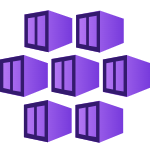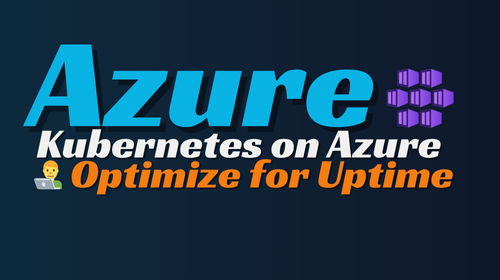- Home
- Security & Compliance
- Your Guide to Getting Started with Kubernetes on Azure 🚀
Your Guide to Getting Started with Kubernetes on Azure 🚀
All You Need to Know About Kubernetes on Azure: Tutorials, Best Practices, and More
Kubernetes, often abbreviated as K8s, is a powerful open-source platform designed to automate the deployment, scaling, and management of containerized applications. Here’s a deeper dive into what Kubernetes is, why it’s important, and how it works:
What is Kubernetes?
Kubernetes is an orchestration system for containerized applications. Containers are a lightweight, portable way to run applications and their dependencies in isolated environments, ensuring consistency across different deployment environments. Kubernetes helps manage these containers at scale, allowing you to deploy applications across a cluster of machines seamlessly.
Key Features of Kubernetes
Automated Deployment and Scaling:
- Kubernetes simplifies the process of deploying applications by managing container scheduling and ensuring the right resources are available. It also automatically scales applications up or down based on demand.
Self-Healing:
- Kubernetes can automatically restart failed containers, replace containers, and reschedule them across the cluster to ensure application stability and high availability.
Service Discovery and Load Balancing:
- Kubernetes provides built-in service discovery and load balancing to distribute traffic evenly across the application instances, ensuring optimal performance and availability.
Storage Orchestration:
- Kubernetes can automatically mount and manage storage resources, making it easier to handle persistent storage for stateful applications.
Configuration Management and Secrets:
- Kubernetes manages application configuration and secrets securely, allowing you to update application settings without rebuilding the container images.
Automated Rollouts and Rollbacks:
- Kubernetes supports automated rollouts and rollbacks for updates to applications, ensuring that changes can be applied smoothly and reverted if needed.
Why Kubernetes is Important
Scalability:
- Kubernetes makes it easier to scale applications to meet varying loads and demands, providing businesses with the flexibility to handle growing workloads efficiently.
Portability:
- Kubernetes runs on various environments—from on-premises data centers to public clouds—offering true multi-cloud and hybrid-cloud capabilities. This ensures applications are portable and can run consistently across different environments.
Operational Efficiency:
- By automating many operational tasks, Kubernetes reduces the complexity and manual effort involved in managing containerized applications, leading to more efficient and reliable operations.
Community and Ecosystem:
- Kubernetes has a large, active open-source community and a rich ecosystem of tools and extensions. This provides a wealth of resources and integrations, making it a robust choice for modern cloud-native applications.
How Kubernetes Works
Kubernetes organizes containers into groups called pods. Each pod can contain one or more containers that share storage, network, and configurations, and represent a single unit of deployment. Here’s a breakdown of key components:
Cluster:
- A Kubernetes cluster is made up of a set of nodes—machines (virtual or physical) that run your containerized applications. It includes a master node and worker nodes.
Master Node:
- The master node manages the cluster and orchestrates all activities. It includes components like the API server, scheduler, and controller manager that are crucial for maintaining cluster health and managing workloads.
Worker Nodes:
- Worker nodes run the application workloads. Each node contains the necessary services to manage the containers, such as the kubelet and the container runtime.
Pods:
- The smallest deployable units in Kubernetes, pods encapsulate one or more containers, their storage resources, a unique network IP, and options on how to run the containers.
Services:
- Kubernetes services provide a stable endpoint to connect to, enabling communication between different pods and other services, even as pods are created or destroyed.
Namespaces:
- Namespaces are a way to divide cluster resources between multiple users or teams, providing scope for resources and helping to organize and manage large clusters.
Controllers:
- Controllers continuously monitor the state of the cluster, managing pods, ensuring the desired state is maintained, and handling tasks like scaling and updating.
Ingress:
- Ingress manages external access to services, typically HTTP, providing load balancing, SSL termination, and name-based virtual hosting.

Getting Started with Kubernetes on Azure!
Embarking on your Kubernetes journey can be daunting, but with the right resources, you can master it in no time. This comprehensive Kubernetes Learning Path from Microsoft offers an invaluable guide through Kubernetes basics, core concepts, architectures, operational best practices on Azure, and even provides access to free eBooks!
- Start Deploying Kubernetes on Azure
Implement Container Instances & Kubernetes Service
🧪 Implement Container Instances
🧪 Implement Azure Kubernetes Service
- Kubernetes Basics Video Series
Kickstart your learning with these fundamental videos:
🎬 Kubernetes Basics Series Playlist
- Architectures and Patterns
Explore advanced deployment and architectural strategies with these insights:
🏗️ Kubernetes Deployment Strategy
🏗️ Microservices Architecture on AKS
- Azure Kubernetes Service Core Concepts
Understand the essentials of Azure Kubernetes Service (AKS) with these resources:
📚 Clusters and Workloads in Azure Kubernetes Service (AKS)
📚 Network Concepts for Apps in AKS
📚 Storage Options for Apps in AKS
- Operational Best Practices for Kubernetes
Master the best practices to optimize your Kubernetes operations:
🛠️ Cluster Operator and Developer Best Practices
🛠️ Best Practices for Cluster Isolation in AKS
🛠️ Best Practices for Authentication and Authorization in AKS
🛠️ Best Practices for Container Image Management and Security in AKS
🛠️ Best Practices for Pod Security in AKS
🛠️ And More!
- Workshop: Deploy a Multi-Container Application
Get hands-on experience with this detailed workshop series:
👨💻 Part 1: Introduction to Kubernetes on Azure
👨💻 Part 2: Azure Kubernetes Service (AKS) Cluster Architecture and Operations
👨💻 Part 3: Azure Kubernetes Service (AKS) Application and Cluster Scalability
Free eBooks
Expand your knowledge with these complimentary resources:
📖 Get Up and Running with Kubernetes Collection
📖 Kubernetes Learning Path Slides
Dive in and explore the wealth of knowledge available to get started with Kubernetes on Azure.

